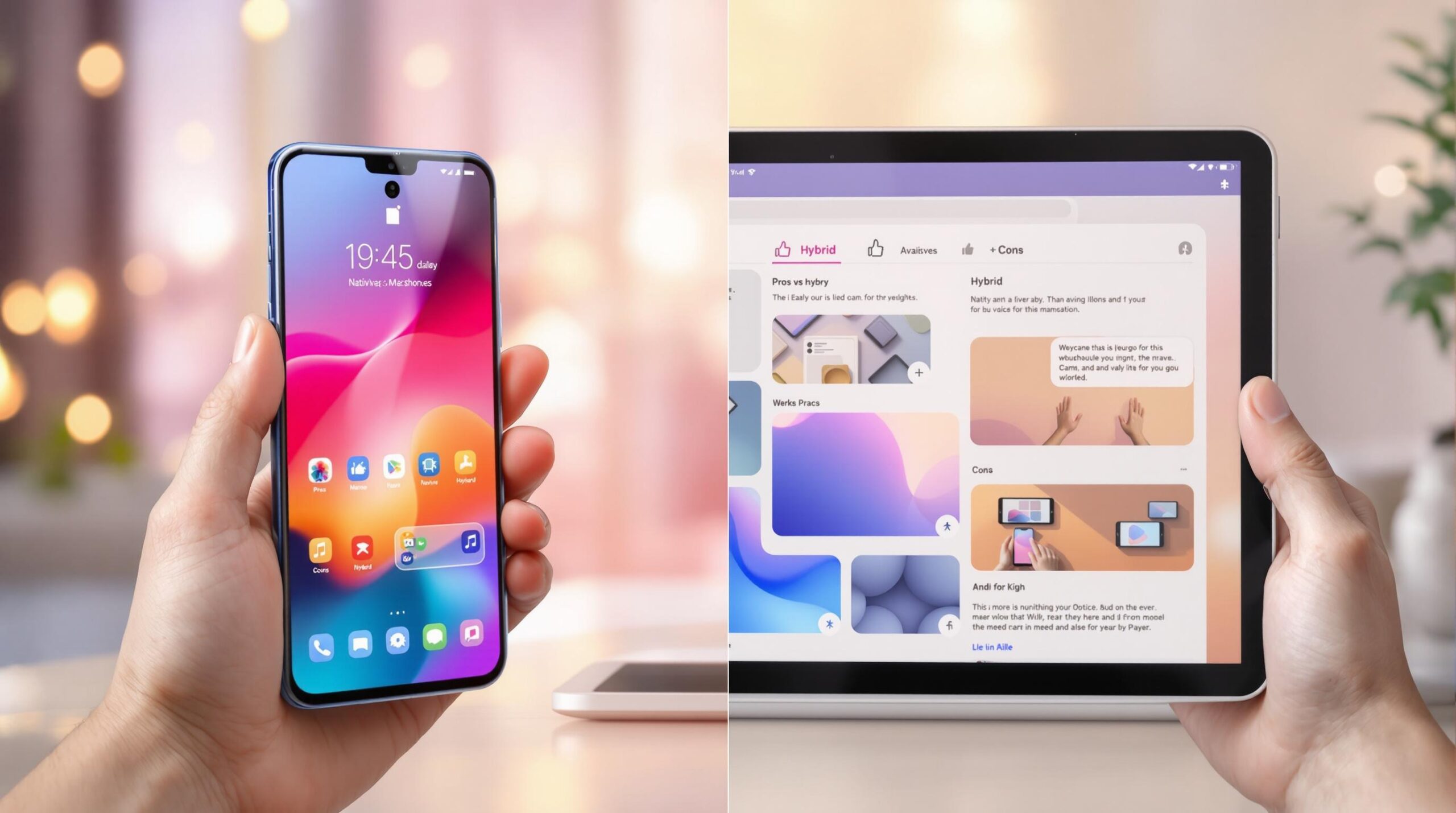
If you’re deciding between native and hybrid app development, here’s the quick answer:
- Choose native apps for high performance, advanced hardware integration, and top-notch security. Ideal for healthcare, gaming, or apps requiring real-time processing.
- Choose hybrid apps for lower costs, faster development, and cross-platform compatibility. Perfect for MVPs, startups, or apps with simpler requirements.
Key Differences:
| Aspect | Native | Hybrid |
|---|---|---|
| Performance | High speed, smooth animations | Moderate, improving with 5G |
| Development Cost | Higher | Budget-friendly |
| Time to Market | Longer | Faster |
| Device Features | Full hardware access | Limited, plugin-dependent |
| Security | Platform-specific protocols | Framework-dependent |
| Codebase | Separate for iOS & Android | Single codebase for all |
Quick Tip:
- For complex apps (e.g., 3D scanning, IoT, or healthcare), go native.
- For cost-effective and faster deployment, go hybrid.
The rest of the article dives deeper into benefits, use cases, and detailed comparisons to help you make the right choice.
Native vs Hybrid vs Web Apps: Which App Is Best for Your Business in 2025?
1. Native App Development Basics
Native app development involves using platform-specific languages, such as Swift for iOS and Kotlin for Android. These apps are known for their speed, operating 10-20% faster than cross-platform options, with load times typically under 2 seconds compared to the 4-second average for hybrid apps. Here’s a closer look at the technical components that highlight the strengths of native apps:
Performance and Integration
Native apps make direct use of device features like GPS, cameras, and biometrics. This allows them to deliver better speed and responsiveness compared to their hybrid counterparts.
Platform-Specific Capabilities
Native development ensures full access to each platform’s latest features. A great example is Laan Labs‘ "3D Scanner App™" (version 1.1.6), which utilizes iOS’s Object Capture API to create detailed 3D models, even in poor lighting conditions. This update, released in January 2025, showcases the potential of native apps to push the boundaries of what’s possible.
| Development Aspect | Technical Implementation | User Benefit |
|---|---|---|
| Hardware Access | Direct API integration | Faster response times |
| UI Components | Platform-specific design | Intuitive interface |
| Security | Native security protocols | Better data protection |
| Updates | Seamless OS compatibility | Consistent performance |
Development Considerations
Roughly 30% of developers choose native development because of its dependable performance and smooth OS integration. Native apps are particularly well-suited for:
- Heavy hardware usage
- Complex computational tasks
- Real-time data processing
- Advanced security features
For instance, native apps can implement cutting-edge features like Bluetooth Mesh networking for IoT applications. They also benefit from platform-specific security tools, such as iOS’s Secure Enclave and Android’s SafetyNet. These technical advantages play a key role in deciding between native and hybrid approaches, a topic explored further in the comparison section.
sbb-itb-7af2948
2. Hybrid App Development Basics
Hybrid app development combines web technologies like HTML5, CSS, and JavaScript within a native wrapper, allowing apps to run on multiple platforms. By 2025, this method has evolved into a cost-efficient option for cross-platform deployment.
Core Technologies and Architecture
Hybrid apps rely on web technologies housed in a native container. Frameworks such as Apache Cordova and PhoneGap make this possible, enabling organizations to maintain a single codebase. Typical project costs range between $30,000 and $50,000.
Modern Framework Ecosystem
Popular frameworks include Ionic, Cordova, PhoneGap, Framework7, and Onsen UI. These tools simplify the development process while addressing some of the challenges discussed later.
Performance Considerations
Performance gaps between hybrid and native apps have narrowed in recent years. Still, apps requiring heavy 3D graphics or real-time processing may face limitations compared to native solutions.
Device Feature Integration
Hybrid frameworks use plugins to access device features. While effective, plugin updates might lag behind the release of new hardware capabilities. Apps like Instagram, Twitter, and Gmail showcase how hybrid development can handle offline functionality, high traffic, and a mix of native and web-based elements.
Development Efficiency
With a single codebase, development is faster, and updates are easier to manage. This approach reduces complexity and ensures smoother app maintenance.
Offline Capabilities
Hybrid apps can work offline by utilizing local storage methods.
Technical Limitations
While native apps excel in hardware integration, hybrid apps strike a balance between cost and speed. However, developers should be aware of certain constraints:
- Limited performance for graphics-heavy tasks
- Dependence on plugins for accessing new platform features
- Challenges with smooth animations in complex UIs
- Extra effort required for consistent cross-platform design
These points provide a foundation for comparing hybrid and native app development in later sections.
Direct Comparison: Native vs Hybrid
Let’s break down the key differences between native and hybrid app development to help you make the right choice. We’ll focus on performance, costs, technical capabilities, and long-term maintenance.
Performance and User Experience
Native apps are known for their top-notch performance, thanks to direct hardware access and platform-specific optimizations. This makes them ideal for apps requiring heavy processing, like Sidekick Interactive‘s healthcare applications, which handle sensitive data and include advanced features such as 3D scanning and augmented reality.
Native apps also offer smoother animations and faster responses. On the other hand, hybrid apps can sometimes show slight delays during complex interactions.
Development Costs and Timeline
Here’s how the costs and timelines stack up:
| Development Type | Cost Range | Timeline | Maintenance Complexity |
|---|---|---|---|
| Native iOS | $30,000 – $200,000 | 4–6 months | High |
| Native Android | $25,000 – $150,000 | 4–6 months | High |
| Hybrid | $20,000 – $150,000 | 2–4 months | Medium |
If you’re targeting both iOS and Android platforms, costs can add up quickly. This is especially relevant given Android’s 71.65% and iOS’s 27.62% market share as of Q2 2024.
Technical Capabilities
Each approach offers distinct advantages:
-
Native development:
- Full access to platform-specific features
- Better performance for graphics-heavy tasks
- Enhanced security options
-
Hybrid development:
- Cross-platform compatibility
- Faster deployment cycles
- Unified codebase management
- Lower upfront development costs
Long-term Considerations
Native apps often require separate updates for each platform but provide more stable performance over time. Hybrid apps, with their single codebase, simplify maintenance but may need frequent updates to stay compatible across platforms.
Industry-specific Considerations
For industries like healthcare and research, native development is often the better choice. It offers:
- Stronger data security
- Better real-time processing performance
- Reliable access to device features
- Easier compliance with strict regulations
However, for less demanding apps or when speed and cost are priorities, hybrid development can be a practical option.
Integration Capabilities
Native apps excel at integrating the latest hardware and software updates. While hybrid frameworks are improving, they sometimes lag in supporting the newest platform features.
Making the Right Choice
When developing healthcare apps with advanced features, it’s essential to weigh several key factors.
Evaluating Project Needs
Native apps excel in handling:
- HIPAA-compliant data security
- Real-time 3D scanning
- Complex Bluetooth Mesh integrations
- Advanced device sensor capabilities
If your app requires these features, native development might be the way to go.
Budget and Timeline Insights
Your budget and timeline also play a big role in choosing the right approach. Here’s a breakdown:
| Project Scale | Recommended Approach | Timeline | Investment Range |
|---|---|---|---|
| MVP Testing | Hybrid | 2–4 months | $20,000 – $100,000 |
| Enterprise Healthcare | Native | 4–6 months | $50,000 – $250,000 |
This table highlights how different project scopes can influence development choices.
Technical Comparison
Here’s a closer look at how native and hybrid options stack up based on specific requirements:
| Requirement | Native | Hybrid | Best Choice |
|---|---|---|---|
| 3D Scanning | Full | Limited | Native |
| Cloud Integration | Full | Full | Either |
| Device Sensors | Full | Limited | Native |
| Cross-platform | Separate codebases | Single codebase | Hybrid |
| Security Features | Platform-specific | Framework-dependent | Native |
Matching your app’s needs with the right development approach is key to its success.
Apps Requiring High Performance
For apps needing real-time processing or complex calculations, native development is often the better choice. As Joel Spolsky puts it:
"A 50%-good solution solves more problems and survives longer than a 99% solution that nobody has because it’s in your lab where you’re endlessly polishing the damn thing".
This suggests starting with a hybrid MVP for testing, then moving to native for scalability.
Platform Preferences
Mobile apps typically perform better than mobile websites, achieving three times higher conversion rates. This makes apps a more attractive option for healthcare businesses aiming to engage users effectively.
Prioritizing Security
Security is non-negotiable for healthcare apps. Native development offers:
- Platform-specific encryption
- Biometric authentication
- Stronger defenses against cross-site scripting (XSS)
These features make native apps a solid choice for safeguarding sensitive healthcare data.

